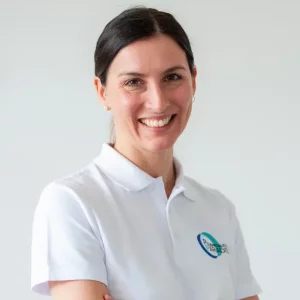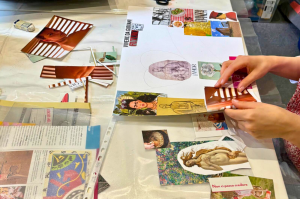In today’s world, children are often exposed to fast-paced schedules, high expectations, and constant digital stimulation. Finding a safe space where they can express themselves freely is essential. The Creative Workshop offers exactly that: an opportunity to give voice to emotions through the language of art, without the need for words.
The Creative Workshop is a form of expressive therapy that uses artistic materials—such as paints, clay, paper, and fabrics—to help children (and not only them) explore their inner world.
No artistic skill is required, because what matters in this journey is the creative process, not the final result.
Led by a qualified professional, this practice can be adapted to the child’s age and needs, offering a welcoming and non-judgmental environment in which to explore emotions, relationships, and personal experiences.
Why is it so effective with children?
Children don’t always have the words to describe what they feel. Emotions such as anger, sadness, fear, or confusion often remain trapped inside. Art then becomes a language, a bridge between the inner and outer world.
Main benefits for children include:
- Emotional development: helps recognize, name, and manage emotions.
- Non-verbal expression: especially useful for shy, introverted children or those who have experienced trauma.
- Improved social skills: group activities encourage empathy and collaboration.
- Boosted self-esteem: creating something with their own hands builds confidence and a sense of competence.
- Enhanced creativity and divergent thinking: essential for cognitive and personal growth.
The specialist supports each person through images, creativity, and imagination, helping them express and process their inner world. After building a relationship of trust, every journey is guided toward individual goals, which the professional identifies thanks to continuous work outside the sessions. Between one meeting and the next, the specialist gathers what the child has expressed and carefully analyzes it through the decoding of visual art. The aim is to foster artistic production, turning thoughts and emotions into communicable symbols. Each intervention is carried out mainly through graphic and material techniques, always personalized and symbolic.
When can it be helpful?
- School-related difficulties.
- Family-related difficulties.
- Relationship challenges.
- Problems with communication and interaction.
- Attention deficit/hyperactivity disorders.
- Emotional crises or distress.
- Low self-esteem.
- Disabilities.
- Anxiety or speech disorders.
- Need for emotional support during growth.
- Eating disorders.
Often, during a creative workshop, we witness real transformations: a quiet child who begins to “speak” through colors, anger that finds an outlet in shaping clay instead of exploding, a bond that is born simply by sharing a blank sheet of paper.
In a time when everything seems to move too fast, the Creative Workshop invites us to pause, listen, and feel, allowing art to do its work: to heal, with both delicacy and strength.


